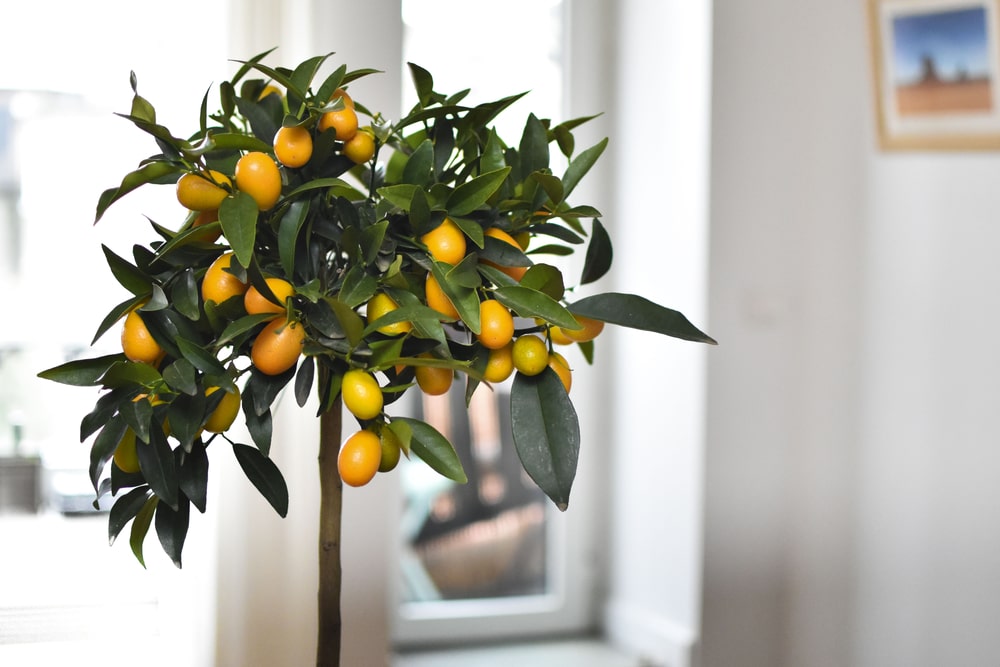Growing citrus trees indoors is fun and easy, if you have the right conditions. I have a Meyer lemon, a key lime, and two kumquats on my back deck. Nothing like drinking iced tea with your OWN lemon or lime floating in it!
Grow Your Own Citrus
- Pick a window with six or more hours of direct sun. An unobstructed south window is best—no sheer curtains, blinds, or overhang, and no trees outside. I grow mine in a southeast window—direct sun from sunrise until about three in the afternoon in the winter. They do okay. Because winter sun is weak and days are short, on cloudy days, I supplement with a grow light.
- Once you’re sure you’ve got the light, choose your tree. I look for a sturdy stem with several branches and fresh new leaves. I don’t care if it has flower buds on it or not. The shock of moving it home may make these fall off anyway.
- Humidity is good. A light misting will help. Remember, the purpose of misting is to ‘fog’ not ‘rain.’ If you mist so heavily that it drips, that’s “raining”. I’d mist lightly—up in the air over top of the plant so that tiny droplets just settle on the foliage. If you have a lot of “high-humidity” plants (like ferns, orchids, etc), then you can use a humidifier.
- Fertilize three times over the season—once in late winter (Valentine’s Day), once at the beginning of summer (Memorial Day), and once in early fall (Labor Day). I use Citrus-tone. Citrus fertilizers usually contain a little more nitrogen, because citrus seems to need a heavier dose. They also need magnesium, so a good citrus formula should contain this, as well.
Citrus may bloom in the winter. While they are self-pollinating, indoors we don’t have breezes to love the pollen around. If yours blooms, you may want to step in and pollinate the flowers yourself. I use a small watercolor-style paintbrush for this. I simply dab it gently in the middle of the flower and wiggle it around, then move to the next flower. You’ll get more fruit sets if you do.
A Couple of Other Things to Keep in Mind
I strongly recommend moving citrus trees outside for the summer. Mother Nature’s fresh breezes and humidity make the tree feel right at home! Wait until the first week of May and, when you move your tree outside, place it under a tree in dappled sun before moving it to full sun. Bring it inside in the fall, when night temperatures fall just below 40 degrees. In the fall, you can help avoid shock by moving it back into dappled sun for a couple of weeks before moving it back inside, so it has a chance to get used to the change in light levels while it still has Mother Nature’s humidity and breezes to comfort it.
Inside for the winter, water trees when the soil is dry a finger-length down, but do not let the plant go so dry that the leaves curl. While it is outside for the summer, water whenever the top of the soil is dry to the touch. Hot summer sun and breezes can make them dry out faster.
Remember that patience is a virtue when growing citrus. It can take that little baby lemon or lime six months to grow up and ripen—but it’s worth the wait!
We just got in a nice selection of citrus—come in and let us help you pick one out!

